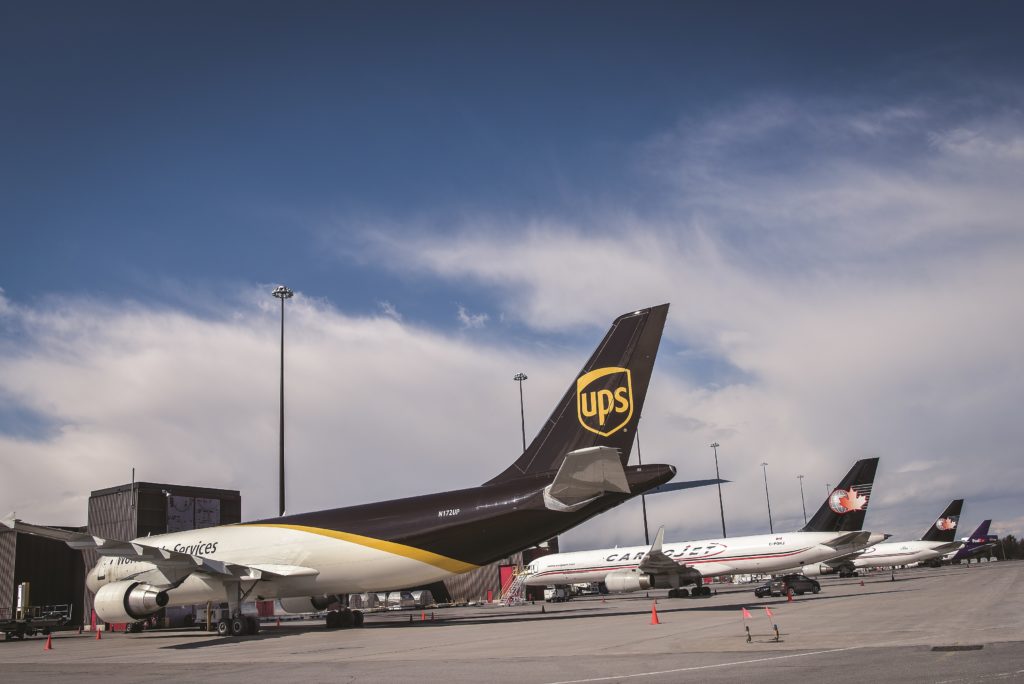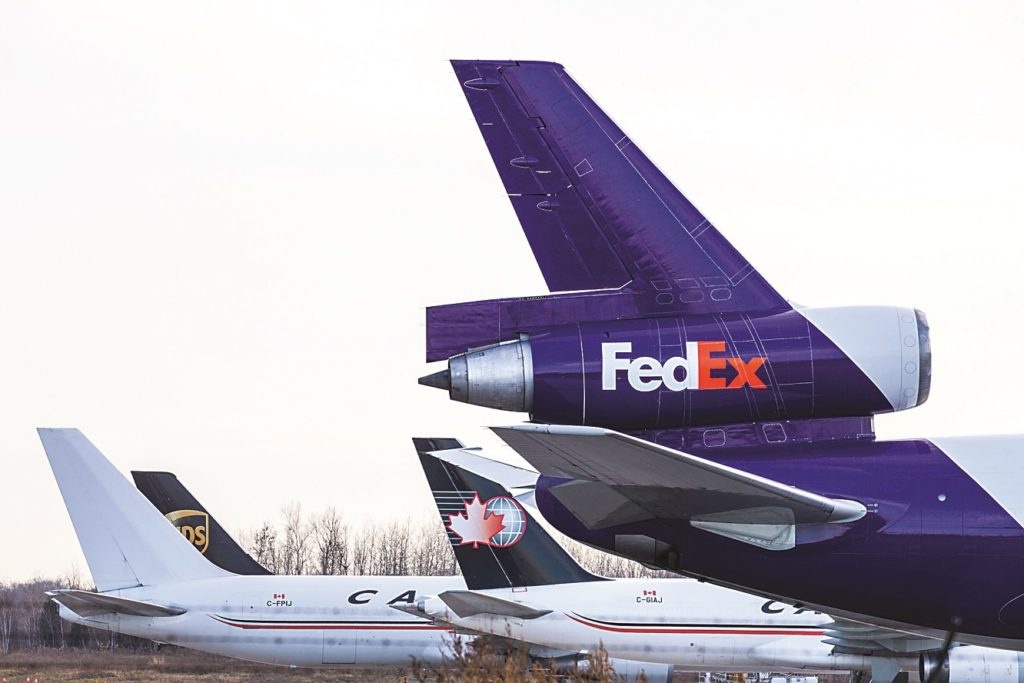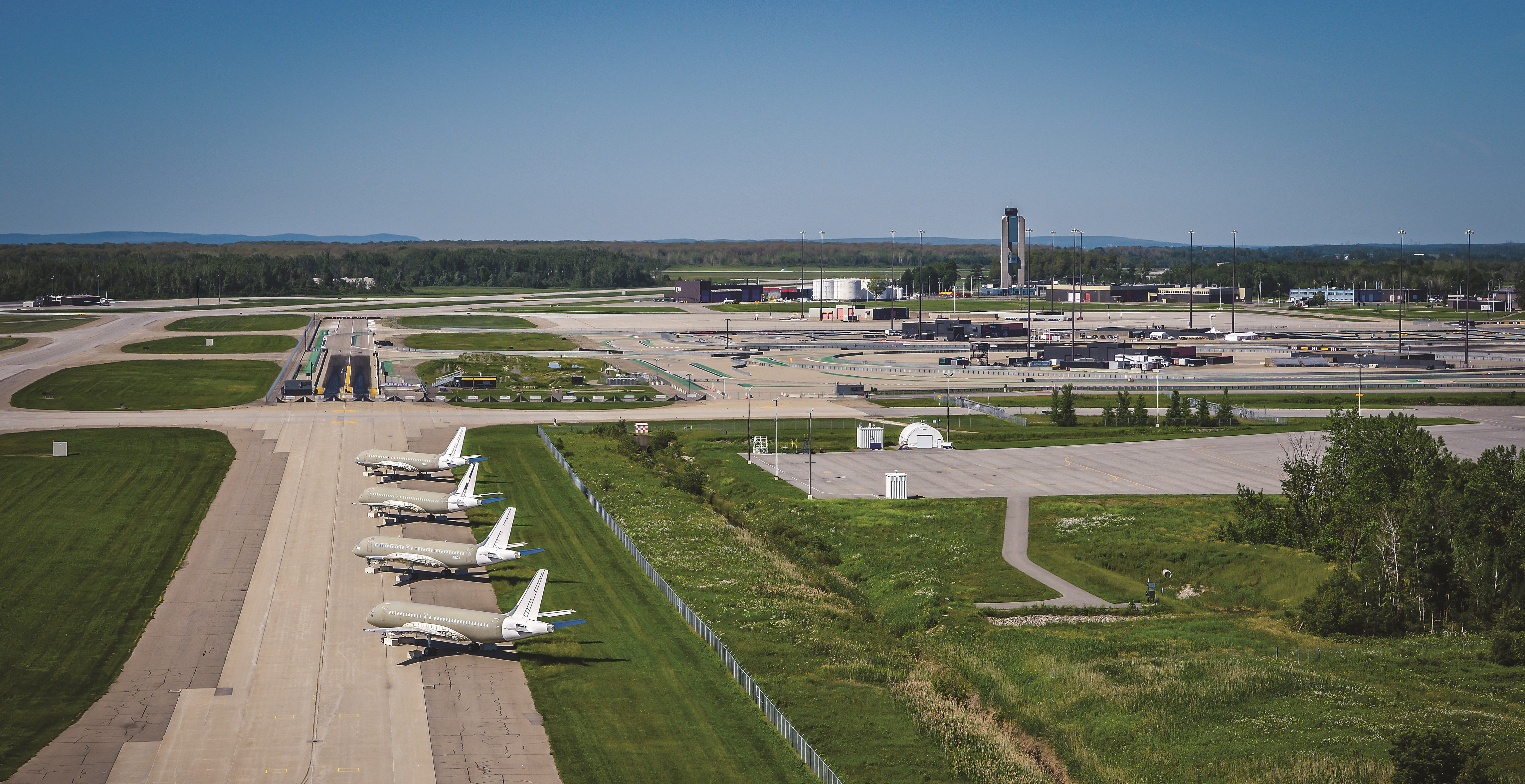Estimated reading time 5 minutes, 23 seconds.
Located 35 kilometres northwest of the heart of downtown Montreal sits the International Aerocity of Mirabel (CYMX). Once envisioned as the Montreal area’s primary gateway for international air travel, Mirabel Airport now serves an entirely different purpose.

“YMX is unique in the sense that it does not receive passenger flights, only cargo,” said Anne-Sophie Hamel-Longtin, director of Corporate Affairs and Media Relations at Aéroports de Montréal (ADM), the local airport authority that took over the facility’s operation in 1992.
“But processing cargo isn’t the main activity of the site, as 90 per cent of the activity at YMX is centred around the manufacture and repair of aircraft.”
Opened in 1975, the airport wasn’t always focused on cargo movements, maintenance, repair and overhaul (MRO) operations and original equipment manufacturers (OEMs).
Envisioned as a replacement for Dorval Airport – now Montreal-Trudeau International – Mirabel was a product of the area’s massive economic boom after Expo 67 earned Montreal international recognition.
At the time, Dorval was seen as a nuisance due to its close proximity to the downtown core of Montreal. Ironically, it would be Mirabel Airport’s distance from the city centre that eventually contributed to the cessation of passenger operations.
A lack of adequate transportation options from downtown Montreal factored into its decline, but so did the development of longer-range aircraft that made a second Montreal airport redundant. Planes no longer needed to stop in the city for refuelling before transatlantic flights, and the airport never managed to surpass three million passengers per year.
Those issues, along with the fact that Dorval was continuously used for all domestic flights, paved the way for Mirabel to shut down passenger operations on Oct. 31, 2004.
Today, the facility is one of the few places in the world where aircraft assembly, component maintenance and manufacturing, aircraft maintenance, aerospace training, engine testing, R&D services and more can be found.
But regardless of all this activity, Mirabel has managed to keep busy with flight operations.

In 2018, the main runway received 24,036 flights and 107,660 tons of cargo – up 19.6 per cent and 11 per cent respectively from 2017. In total, 15 all-cargo carriers operate at CYMX – FedEx, UPS, Purolator and Cargojet are among them.
Not to be outdone by the cargo arm of the airport’s operations, “Mirabel also represents a base for general aviation operations related to business. Hélibellule offers first class helicopter transportation services, while Nolinor Aviation is offering specialized commercial charter flights,” said Hamel-Longtin.
Over the past decade, ADM has invested more than $150 million into Mirabel, including $60 million in 2016 towards upgrading the main runway, which is the second-longest in Canada and “can accommodate the largest carriers.”
“Since then . . . Mirabel has been growing,” continued Hamel-Longtin. “There are more jobs in Mirabel today, and of higher quality, than at the time of international flights. In fact, 72 per cent of the approximately 5,000 direct jobs at CYMX are related to aerospace products and parts manufacturing. The total business activity of CYMX generated $1.1 billion of nominal GDP [gross domestic product] in Quebec.”
On July 1, 2018, Airbus officially assumed a controlling stake in Bombardier’s C Series aircraft program – which has since been rebranded as the A220 – effectively making Canada Airbus’s fifth home country. The OEM’s arrival has already resulted in benefits for Mirabel, including the construction of new hangars for assembly work.
For ADM, the partnership was “a tremendously proud moment for all the employees working on the CYMX site and a powerful reflection of Quebec’s know-how,” said Hamel-Longtin.

“The arrival of Airbus has given the site a strong momentum, and ADM wants to take advantage of it in hopes to continue to implement the entire value chain at the International Aerocity of Mirabel,” she explained. “At this moment, several potential projects are on the table and we hope they will take off.”
Meanwhile, the Mirabel Airport campus been focused on environmental sustainability.
“Sustainable development is an integral part of ADM’s mission, and several actions aimed at protecting the environment are carried out,” said Hamel-Longtin. “Recent initiatives include the introduction of a harmonized collection of organic and recyclable materials for all tenant businesses at the Aerocity, in collaboration with the city of Mirabel.”
In addition to those efforts, 96,000 trees were planted at the airport as part of a repurposing project with CO2 Environnement (now known as NatureLab) and about 300,000 bees have called the airport home since the installation of five hives.
More recently, ADM announced an investment of $107 million, $50 million of which will come from the federal government’s National Trade Corridors Fund, for the development of an aero-logistics hub at Mirabel. The hub will consist of three components: increasing the cargo apron capacity by adding 13 aircraft parking spaces; developing additional storage space (215,278 square feet/20,000 square metres); and improving the road network.
“These enhancements will go a long way in responding to the growth of air cargo and supply chain activities, while improving the operational fluidity of all-cargo aircraft,” said Hamel-Longtin.
Since the airport ceased passenger operations in 2004, ADM has worked to keep Mirabel operational. From cargo operations to OEM housing, the International Aerocity of Mirabel has diversified to a point that goes beyond your standard airport – and looks to maintain that course into the future.

